Safety focus required for drivers and vehicles
Filed under: Weekly test drives, Autos
By John Gilbert
Driving in the rain, and the snow, and in other dangerous conditions, are topics worth frequent discussion, and so is the ability to focus on driving, even when conditions are perfect. Safety technology in modern vehicles is truly remarkable, and the technical capabilities built into new vehicles can be a tremendous ally to any driver. But those features cannot insulate us from the potential of tragedies that always lurk out there.
During our last visit, we discussed the numerous vehicles available for the Midwest Auto Media Association (MAMA) members to drive at the annual Fall Rally at Autobahn Country Club in Joliet, Ill., and the ensuing voting procedures for Family Car of the Year. Two things led me to follow up this week. One was the explanation I noted about driving home from Chicago to Duluth, in extraordinary circumstances. The other was a personal family tragedy we were stricken with on a Minnesota highway.
Driving home from Chicago, we had the opportunity to drive a new 2020 Hyundai Palisade, that South Korean company’s first venture in building a large, roomy, 3-row SUV, and Hyundai’s partner, Kia, offers a sister ship with the Kia Telluride. Hyundai has been making a series of fantastic vehicles accompanying a decade of remarkable technical breakthroughs, since about 2010, shortly after taking over the struggling Kia brand. Kia was able to adapt to Hyundai’s technical mastery and the two now operate separate but equal vehicles at all levels, leaving the styling to differentiate your choice.
When it comes to the new Palisade — and Telluride — I must say it is challenging, if not impossible, to pick one over the other.
I had driven the Palisade at its introduction, in Coeur d’Alene, Idaho and the surrounding mountains, and on a very interesting journey across the state of Washington, after that introduction. I also recently had a week to live with a Telluride, home on Lake Superior’s North Shore, just outside Duluth, Minnesota. So this would be my chance to drive the Palisade home for a week’s use, and potential comparison. Getting there was more than half the fun, and education, of the Palisade’s assets.
The Telluride had all of those same assets — a fantastic new platform, longer than the outgoing Sante Fe, with Hyundai’s engine magic applied to its 3.8-liter V6, with direct injection, an 8-speed house-built automatic transmission that is up there with the top transmissions in the industry, a secure safety structure making generous use of high-grade steel from Hyundai’s own steel manufacturing plant, and a firm but supple suspension system to accommodate the active, on-demand all-wheel-drive system.
Track driving can’t beat night freeway downpour test
Filed under: Equinox, Weekly test drives, Autos
By John Gilbert
Joliet, Ill.—We poured out of the meeting room after breakfast to look over the rows of new cars we were about to test drive on the private road-racing course at the Autobahn Country Club. That’s when I first spotted the pair of compact SUVs, parked only a few feet apart, and clearly unrelated.
As it turned out, they were two of the most impressive vehicles, in my opinion, of the annual MAMA Fall Rally, held on October 2, 2019. The first one was a low and sleek vehicle, parked next to a flashy Ford Explorer, which itself has been redesigned as a 2020 SUV. But the low, sleek little black one was the new Escape — looking nothing like any Escape we’ve seen in the two decades of its life.
For further evidence, we drove the Escape and found it quick, agile and a treat to drive, around the side-roads surrounding the Autobahn Country Club. I drove it back in, and parked it in exactly the same spot it was, and when I climbed out, I spotted a gleaming white compact SUV — the new BMW X2, which, as a fool could guess, is smaller than an X7, X5, X4, and X3, and larger than the X1. This X2 also was an M35, meaning BMW’s high-performance treatment had imbued it with more power, special suspension, special interior, and everything you might want, if you can afford it, to update it from 2019 to 2020.
Driving the X2 was also a treat, and it would have been our No. 1 pick, except that the Escape was a much more user-friendly price, and you could undoubtedly buy two of them for the price of the X2. So in our ranking, the star of the show was the Escape, and the BMW X2 second. We vote on a “family vehicle of the year” through MAMA, which seeks real-world family virtues in a vehicle, which must also be a 4-door, to preclude racey coupes.
The Midwest Auto Media Association (MAMA) puts on two fantastic shows for its members every year, a Spring Rally at Elkhart Lake, Wis., on the Road America road course, and a Fall Rally at the Autobahn Country Club. That facility, with two complete road courses, is laid out with high-tech maintenance garages adjacent, and it’s just like a golf country club, only instead of playing golf, you come out, work on your favorite car, and go out and drive in on the track. Within reason, of course. The only downside was that the Chicago region was hit by pretty steady rain all day, so we either drove on the nearby roadways, or took it very easy on the race track.
Reporting about cars — and sports, too, for that matter — is a family affair in the Gilbert Household, and Jack, our older son, always accompanies me to the rallies, and was my co-driver down and back from Duluth to Chicago. He also takes photos and gives us two rear ends in the drivers seats and four eyes instead of two to scrutinize the new stuff. He agreed with me that the Escape and X2 were the two show-stoppers, although he would put the BMW first.
The field of vehicles was somewhat restricted this year, with one reason being the arrival of the threats by General Motors and Ford to cut back on cars, in favor of trucks. Also, there seemed to be fewer all-new vehicles among the cars of the world, and we did our best to scare them up.
We drove down in the Lexus ES300h hybrid luxury sedan, and I mentioned in last week’s report that we’d be able to more fully discuss that one after driving it 422 miles from Duluth to Joliet. I had said for most of the week, I had averaged about 32 miles per gallon, and, sure enough, on our trip — watching speed limits and the narrow lanes of road construction closely — we tallied 46.9 miles per gallon for the trip.
Toyota was the sponsor for the breakfast, and showed off its greatly ballyhooed and heavily promoted Supra. Very impressive, and a slick 2-seater that returns the brand to the high-performance sports car scene it seemed to have abandoned. The secret of the Supra is that Toyota collaborated with BMW to build it. BMW still makes an in-line 6, which was the engine of heritage in the previous Supra. There is tremendous power in that inline 6, with 335 horsepower and a torque rating of 365, which peaks at 1,600 RPMs and holds it up through 4,500 RPMs. Not bad for a 3,397-pound car, with 50-50 weight distribution. It starts at $49,995 in base form, but escalates almost as fast as its acceleration with options. Read more
Letters, numbers make AMG CLS53 Coupe stand out
Filed under: Weekly test drives, Autos
By John Gilbert
There are Mercedes fans who like the E-Class best of all the German sedans, and there are luxury car buyers who insist the S-Class is best. The masses might prefer the obtainability of the more compact C-Class. You don’t have to be an auto researcher to figure out what Mercedes is doing, but it wouldn’t hurt.
All I know is that I recently had a Mercedes CLS for a week — but it wasn’t “just” a CLS. It was an “AMG CLS53 Coupe,” which isn’t a true coupe at all, and it adds the sizzle of that AMG prefix. It came in Cardinal Red Metallic paint, and the AMG guys have built a special new engine for it — a 3.0-liter in-line 6-cylinder engine with hybrid electrical energy boost to 429 horsepower and 384 foot-pounds of torque.
A basic C-Class sedan starts at $41,500, with a 2.0-liter 4-cylinder that is quick and can get you over 30 miles per gallon all the time. Add CLS to the mix and you’re up to a $70,000 base price. And when you put AMG into the picture along with the CLS, and the impact of hybrid complementary power and 4Motion all-wheel drive, the sticker price on my test car was a cool $106,980.
The car has the look of some hot-rod styling upgrades, German style, and it goes like the proverbial bullet, on upgraded tires, wheels, suspension, chassis and drivetrain components, making it rise toward actually being worth such a lofty price. People seem to have money, and after they buy a fancy house with way-more bedrooms and bathrooms than they need, buying a couple of cars makes some sort of sense. And buying a car like the high-end AMG CLS53 Coupe seems somewhat logical.
Back for some remedial Mercedes research, here’s a brief overview:
The most impressive thing about the ongoing path of Mercedes Benz automobiles is that every time the company brings out a new model of any of its vehicles, they invariably stand up as the best of the batch. The C-Class was the base size and price, the E-Class midsize, ad the S-Class large and luxurious. Read more



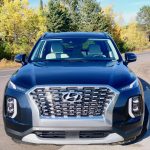
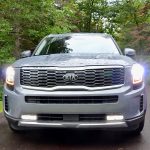
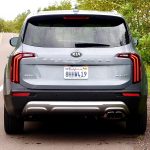
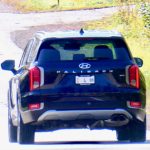
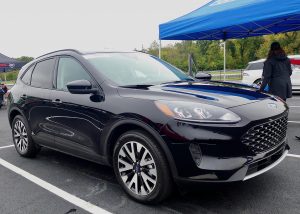
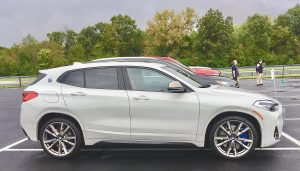
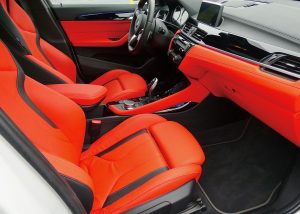
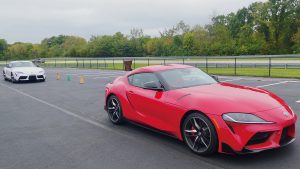

 John Gilbert is a lifetime Minnesotan and career journalist, specializing in cars and sports during and since spending 30 years at the Minneapolis Tribune, now the Star Tribune. More recently, he has continued translating the high-tech world of autos and sharing his passionate insights as a freelance writer/photographer/broadcaster. A member of the prestigious North American Car and Truck of the Year jury since 1993. John can be heard Monday-Friday from 9-11am on 610 KDAL(www.kdal610.com) on the "John Gilbert Show," and writes a column in the Duluth Reader.
John Gilbert is a lifetime Minnesotan and career journalist, specializing in cars and sports during and since spending 30 years at the Minneapolis Tribune, now the Star Tribune. More recently, he has continued translating the high-tech world of autos and sharing his passionate insights as a freelance writer/photographer/broadcaster. A member of the prestigious North American Car and Truck of the Year jury since 1993. John can be heard Monday-Friday from 9-11am on 610 KDAL(www.kdal610.com) on the "John Gilbert Show," and writes a column in the Duluth Reader.